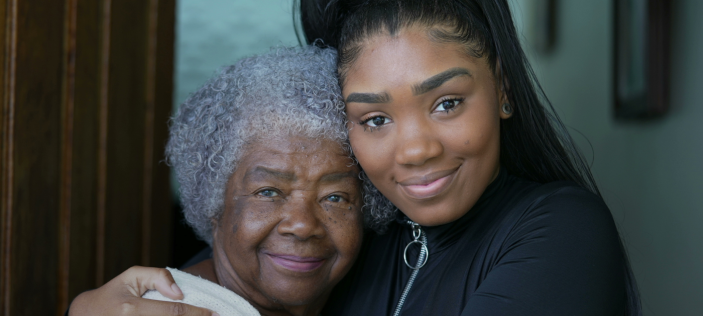
Just before half term (6th-12th February 2023), thousands of schools across the country marked Race Equality Week. This is an annual UK-wide movement, with the purpose of ‘uniting thousands of organisations and individuals to address the barriers to race equality in the workplace.’
There’s no doubt that this is a laudable aim. And the following issues, raised in peer-reviewed research, would suggest that there are many barriers to overcome in education:
- The low attainment levels from Early Years to A level of key ethnic minority groups
- Evidence of unconscious teacher race bias in assessment grading and pupil grouping decisions
- The number of race incidents reported in schools annually
- Over-representation of certain ethnic groups in suspensions and permanent exclusions and those who become NEETs
- The lack of protagonists of colour in children’s literature, picture books and fiction textbooks
- Under-representation of people of colour in the curriculum
- Under-representation of students from racially minoritised backgrounds in admission rates to university and over-representation in drop-out rates from university
- The low percentage of adults from minority ethnic backgrounds working in schools, especially as teachers and even more so as leaders and governors/trustees
- Racism being a key factor leading to teachers of colour leaving the profession.
Yet I have two issues with Race Equality Week.
- Surely we should be striving for race equity, not equality? If we focus just on providing the same opportunities for everyone, regardless of race or in a ‘colour blind’ fashion, we will continue to see inequitable outcomes and under-representation of racially minoritised people in schools. We have to acknowledge that it will take positive and focused additional action to ensure that the rights and needs of people of colour are met in our schools.
- There’s a danger, as with Black History Month, of schools planning one-off and tokenistic responses or initiatives rather than acknowledging that striving for race equity is a full-time, life-long commitment.
Striving for race equity is a full-time, life-long commitment.
Rachel Macfarlane, HFL Education
Schools truly committed to anti-racism work will hopefully have used Race Equality Week to launch initiatives that will unfold and embed over the course of a year or more and to set goals and publicly-declared pledges that will commit them to actions that will affect equitable outcomes for people of all ethnicities.
Leaders, governors and trustees in schools committed to becoming anti-racist will strive to:
- become comfortable talking about race and create safe and brave spaces for staff and pupils to do likewise
- address unconscious bias and examine inequities between, and under-representation of, racial groups
- audit all aspects of their provision to determine what needs to change
- be equipped with ideas, strategies and approaches to address any aspect of inequity that is relevant to their school/setting
- action plan and implement change effectively and with lasting impact.
In Hertfordshire in 2021, we set up an annual programme called ‘Great Representation’. The key aims of the programme are to bring together leaders of primary and secondary schools (mainstream and special):
- to encapsulate the key features, structures and practices of schools which have a strong ethos of anti-racism, to better understand how schools become great at inclusion, diversity and equity
- to explore strategies, review literature and hear from expert speakers on how to achieve great representation of people of colour in the curriculum and the school community and
- to share great practice and ensure that schools engaged in exciting race equity practice are contributing to system leadership across the county.
The programme has enhanced the understanding of colleagues from the 50 schools that have participated to date. One headteacher reflected, “I now see my school with different eyes, without complacency about its diversity, and my plan for the work ahead has changed significantly. The course has made me braver in so many ways.”
10 great ways for leaders to demonstrate to their school community their commitment to anti-racism
- Making a public declaration and sharing personal targets that are a commitment to personal action.
- Communicating high expectations of all staff and all learners and striving to ensure that all staff and learners share the highest expectations of themselves and each other.
- Giving time to ensure that every race incident is dealt with and the school’s actions communicated appropriately.
- Ensuring that the ethnicities and heritages present in the school are known by all and that key data is shared appropriately and utilised to ensure representation.
- Leading a review of the school’s policies to ensure that anti-racism is embedded within each.
- Modelling the importance of honouring everyone’s name.
- Creating an infrastructure of roles, responsibilities and resourcing to ensure there is the capacity to generate the momentum to tackle race inequity.
- Keeping race equity at the top of the school’s agenda: on meeting agendas, in the School Improvement Plan, in appraisal objectives etc.
- Protecting time for regular and ongoing racial literacy training, enabling staff and students to talk and learn about race issues.
- Creating a school-wide common language around race equity.
Creating an anti-racist school is not easy. It’s not a quick fix or a priority for one week of the year. It is a safeguarding issue. It is about educational excellence for everyone. It is synonymous with whole school improvement. It should be an imperative for us all.
Further information
Race equity and anti-racism bespoke support and training
HFL Education Hub: race equity training and events
To subscribe to our blogs: Get our blogs straight to your inbox






